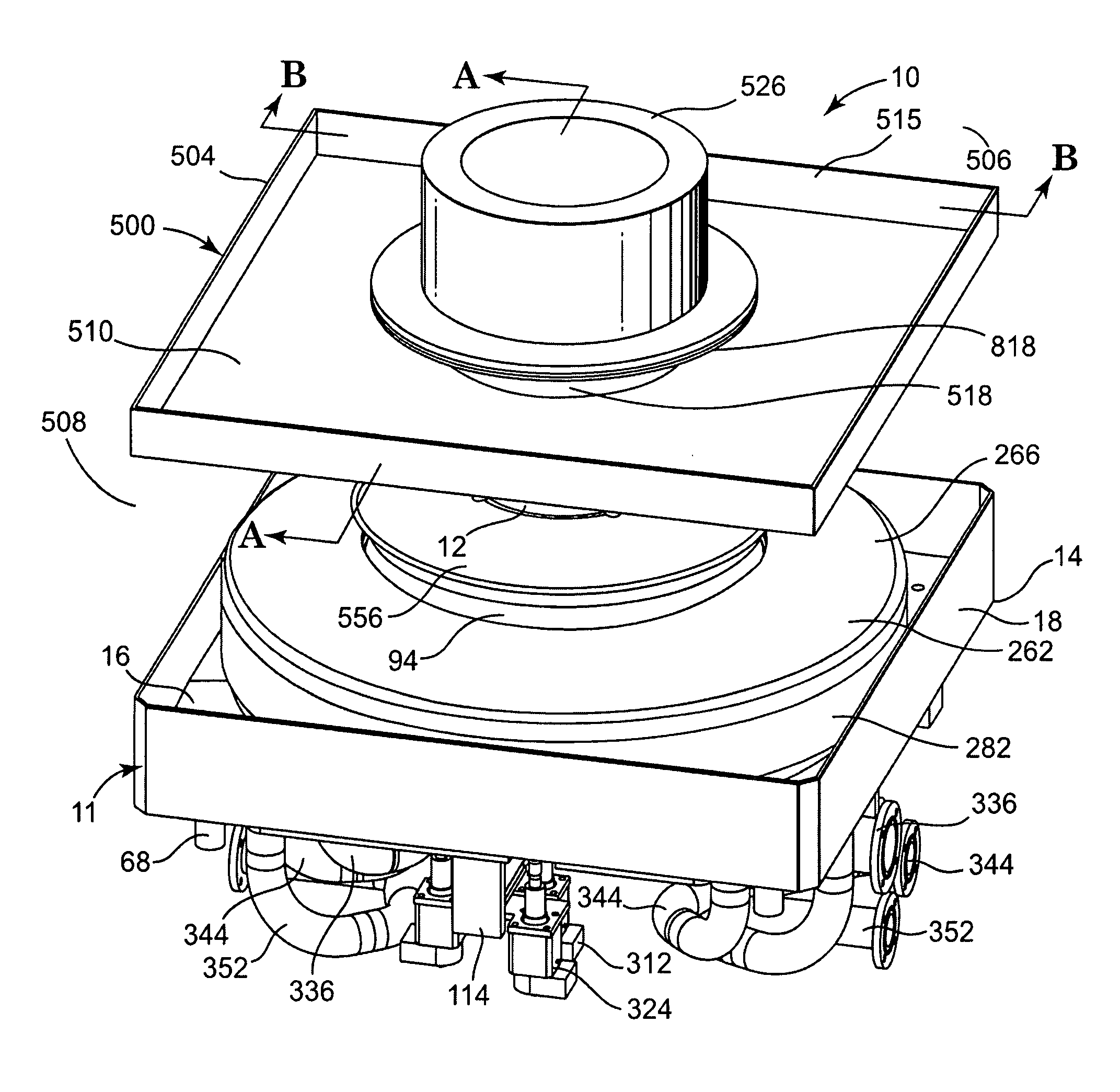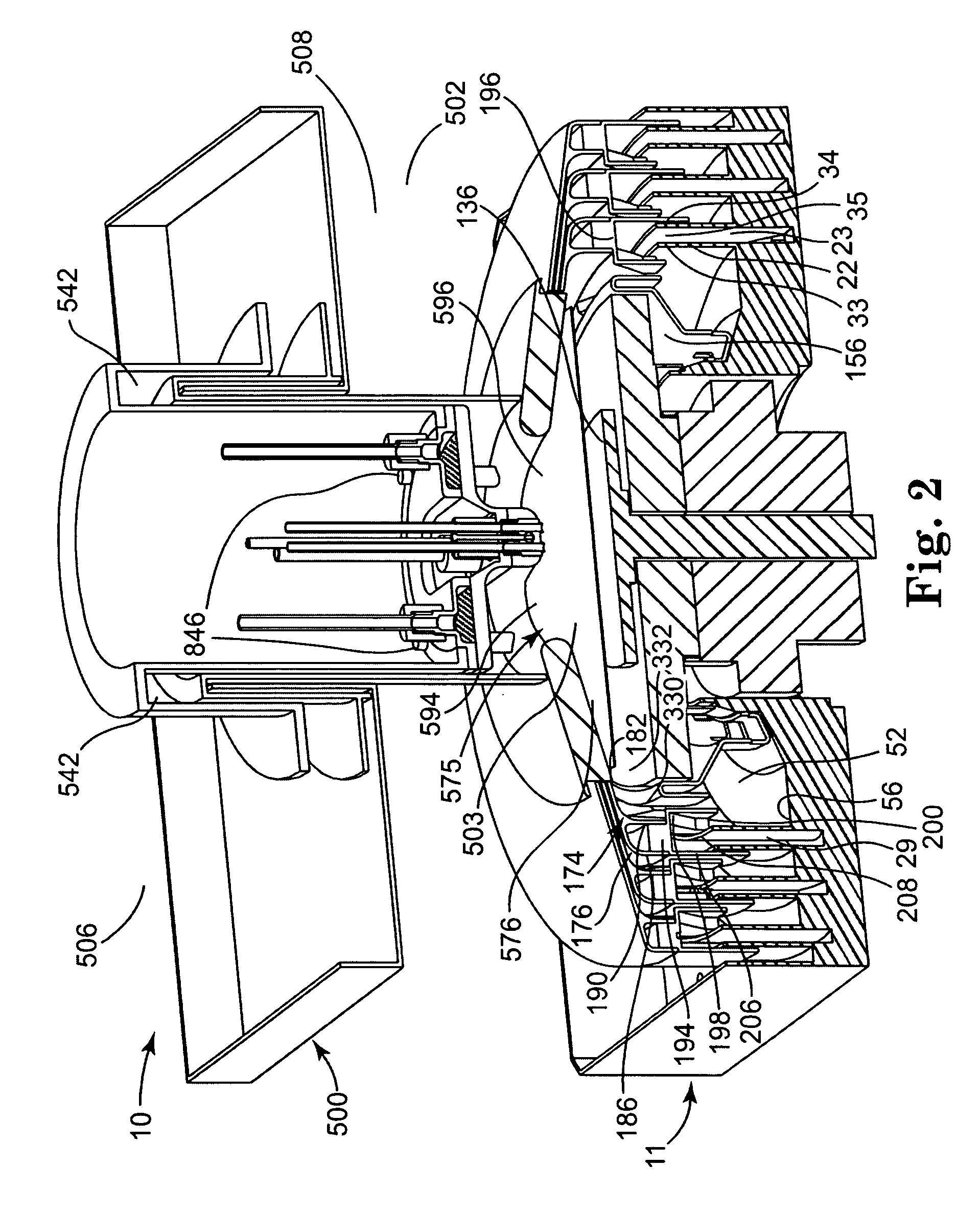Barrier structure and nozzle device for use in tools used to process microelectronic workpieces with one or more treatment fluids
a technology of treatment fluids and nozzle devices, which is applied in the direction of cleaning processes and apparatus, thin material handling, cleaning using liquids, etc., can solve the problems of conventional approach suffering from serious drawbacks, treatment fluids that are too reactive in the presence of other treatment materials, and use a single duct like this is not desirable in all instances, so as to achieve the effect of reducing cross-contamination
- Summary
- Abstract
- Description
- Claims
- Application Information
AI Technical Summary
Benefits of technology
Problems solved by technology
Method used
Image
Examples
Embodiment Construction
[0065]The embodiments of the present invention described below are not intended to be exhaustive or to limit the invention to the precise forms disclosed in the following detailed description. Rather the embodiments are chosen and described so that others skilled in the art may appreciate and understand the principles and practices of the present invention. While the present invention will be described in the specific context of fluid based microelectronic substrate cleaning systems, the principles of the invention are applicable to other microelectronic processing systems as well.
[0066]FIGS. 1 through 38 show an illustrative tool 10 that incorporates principles of the present invention. For purposes of illustration, tool 10 is of the type in which a single workpiece 12 is housed in the tool 10 at any one time and subjected to one or more treatments in which liquid(s) and / or gas(es) are caused to contact the workpiece 12. In the microelectronics industry, for instance, tool 10 may b...
PUM
 Login to View More
Login to View More Abstract
Description
Claims
Application Information
 Login to View More
Login to View More - R&D
- Intellectual Property
- Life Sciences
- Materials
- Tech Scout
- Unparalleled Data Quality
- Higher Quality Content
- 60% Fewer Hallucinations
Browse by: Latest US Patents, China's latest patents, Technical Efficacy Thesaurus, Application Domain, Technology Topic, Popular Technical Reports.
© 2025 PatSnap. All rights reserved.Legal|Privacy policy|Modern Slavery Act Transparency Statement|Sitemap|About US| Contact US: help@patsnap.com



